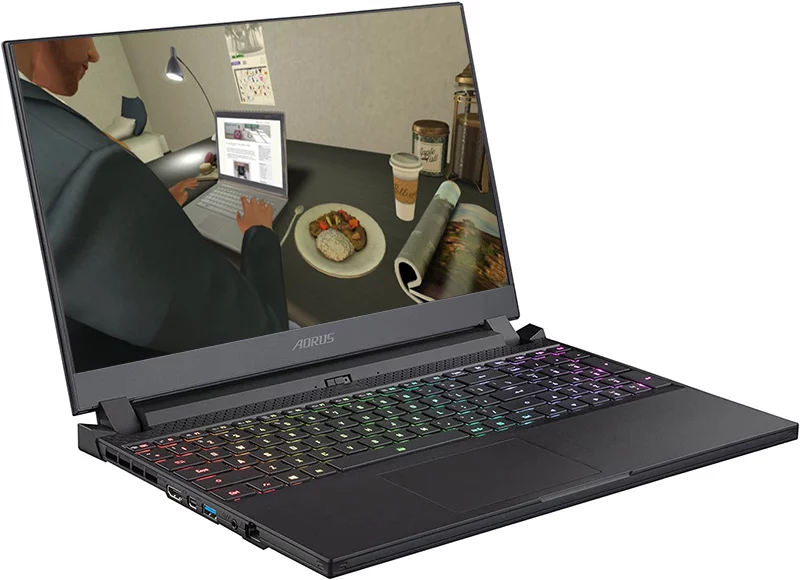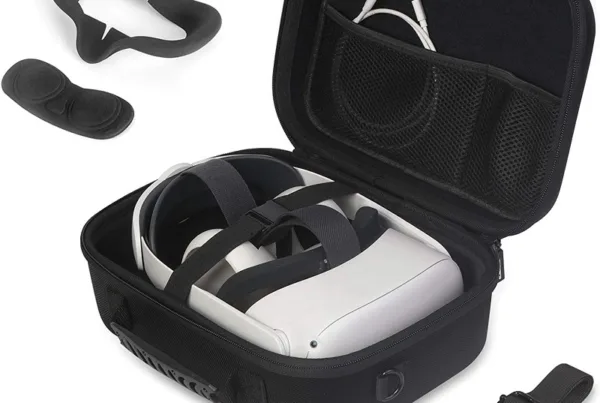Second Life is known for two things: having some of the best metaverse graphics, and extreme lag. And yes, one directly impacts the other (among other things). That’s why we decided to write a guide to the best laptop for Second Life.
Here’s why we believe it’s (currently) the Gigabyte AORUS.
The Best Laptop for Second Life: Criteria
We’ve previously discussed the challenges of graphics in the metaverse. To quickly review, everything – graphics, scripts, avatar movements, UI elements, images, etc. must all load in real time.
None of it can be preloaded on the user’s device since the content is all user-generate. This is one of the biggest differences between virtual worlds and MMO games. It’s also why a powerful machine is needed to access the metaverese.
It’s also the reason that so many metaverse platforms scale back their graphics; there are simply too many other priorities. However, Second Life sets itself apart by offering better graphics.
So, since every aspect of the environment is trying to stream at once, having a top-notch machine becomes even more important.
This means the best laptop for Second Life needs:
- a fast processor to execute scripts
- a powerful GPU to load and render 3D models quickly as they’re streaming
- a large, fast hard drive to store files and increase response times
- enough RAM to hold large amounts of data quickly
- enough ports to connect with essential peripherals
- a number pad for better in-world interactions
- A reasonable price for enthusiasts and developers alike
How the Gigabyte AORUS Measures Up
There are actually a few laptops that will work well for Second Life – but they’re usually very expensive. Here, we’ll cover the attributes that make the AORUS the best laptop for Second Life in terms of both price and performance.
Intel 8-Core i7 Processor
Like we said, Second Life is a resource-heavy platform. Obviously, the processor is central to everything that the computer, well, processes. This includes the scripts and instructions that come with any program.
But with Second Life, scripts must stream and execute in real-time. Also, LSL scripts are written by users of varying skill levels, and there is no quality assurance process before user-generated scripts are used in-world. So, code is often inconsistent and inefficient.
Computer processors have two important attributes when running a platform like Second Life: speed, and core count.
The processor’s speed determines how fast it executes instructions. This includes the scripts that make Second Life assets interactive.
It also includes the communication channels, streaming services, search functions, and other tools included with the Second Life client.
The number of cores basically determines how many pipelines the processor has available to process instructions simultaneously. Obviously, the more cores a processor has, the more instructions that it executes during each cycle.
AORUS has an 8-core processor – which means it can execute an insane number of instructions simultaneously. It also boast a 2.3 GHZ speed, which means it can execute those instructions very fast – but for Second Life, we recommend turbo boosting the processor to its full (and blazing fast) 4.6 GHZ potential.
Of course, if you’re going to do that, it’s vital to have an effective cooling system (more on that later).
The processor also features 24MB of L3 Cache, a component that, basically, helps it preload data. That’s actually quite a bit even by today’s standards.
A Beast of a Graphics Processor
The AORUS also comes with a VR-ready dedicated NVIDIA GeForce RTX 3070 graphics card. This beast offers a massive 8GB of video memory on GDDR6 RAM with a boosted clock speed of 1560MHZ. In other words, it processes graphics very fast and offers plenty of temporary storage for it.
These specs play a crucial role when your system must process and hold graphics for your surrounding environment. Typically, computers preload these environments into temporary storage (the GDDR6) for games that have been installed. However, large and powerful temporary storage is especially important for Second Life since everything loads in real time.
And since it’s a dedicated card, it won’t rob the system’s resources the way an integrated card would.
As an added bonus, it can also connect with three screens simultaneously in addition to the laptop’s screen. That’s 4 total screens that you can work with simultaneously.
So if you’re designing, testing, and promoting a business in Second Life, this laptop allows you to do so more efficiently. And, of course, it offers 4K output.
MASSIVE Solid State Drive Storage
There are basically two types of permanent storage options for computers: mechanical, and solid state.
Long story short, solid state drives (SSDs) are significantly faster and more reliable than traditional mechanical drives. As we’ve discussed, speed is an important consideration in Second Life.
But if you’re a creator, chances are pretty good that you have a lot of files on your computer. Second Life supports 3D assets, images, textures, sounds, scripts, and animations (among other things) that are all created by its users. If you’re one of them, you’ll probably need a lot of storage.
The AORUS features a massive 2TB SSD NVMe M.2 drive. What does that meant? For comparison, your phone may say that it offers 128GB of space. 2TB means 2,000GB of storage space. That’s pretty significant.
It also connects via a PCIe port, which offers significantly faster transfer rates than other ports.
Networking Connections
Like we said earlier, a fast machine is only part of the problem. Second Life also requires a fast network connection with a lot of bandwidth to stream its massive array of assets in real time.
The onboard Intel Wi-Fi 6 AX201 offers a superb wireless connection and includes an Ethernet port for a faster, more reliable direct connection. It’s compatible with all high-speed connections and maximizes your IP’s bandwidth for more simultaneous data transfers.
Of course, your Internet plan’s speed and bandwidth will still play an important role in how well Second Life performs.
Essential Ports and Gear for Second Life
You know what else is important for the best laptop for Second Life? Ports to connect all of your essential gear. And for Second Life, you’re going to need that gear.
The AORUS includes the following ports:
- 3 Type-A USB 3.2 ports
- 1 Thunderbolt 4 Port (support both a DisplayPort and power delivery)
- 1 Mini Dsiplay Port 1.4
- 1 HDMI 2.1 port
- 1 RJ-45 2.5 Gbps port
- 1 UHS-II SD card reader
- 3.5mm audio port
- Intel Wi-Fi 6 AX201 802.11AX (2 x 2) (more on this later)
- Bluetooth 5.2
This is especially important if you’re a Second Life creator. You may need drawing tablets, industry-leading cameras, streaming equipment, cooling pads, and other essential metaverse gear to build a successful business.
Wireless Connections
“But, what about my headset?” you may ask. First, the AORUS includes a great integrated microphone and robust speakers.
But if that still isn’t enough, you can also connect a wireless headset with the laptop’s high speed Bluetooth 5.2 connection. For that matter, you can also connect a wireless Bluetooth keyboard and mouse, freeing up your USB ports for other essential gear.
Premium Cooling Pad
Here’s the thing about powerful laptops: they generate a lot of heat. They simply don’t have as much room to release heat as desktops.
If your laptop overheats, it may suddenly turn itself off to literally prevent the processor from melting. Excessive heat can also slow the system’s performance and, in the long run, cause irreparable damage.
Needless to say, you’re going to need a cooling system. And in the case of GIGABYTE’S AORUS, you’re going to need a good one.
That’s why I personally recommend the ICE COOREL gaming laptop cooling pad. Yes, it costs a little more than typical gaming pads. But its features and performance are well worth it.
The COOREL features six fans that help keep the laptop cool from below. An LCD display allows users to easily choose the right settings for their setup.
The stand is also adjustable for exceptional ergonomic support. The edges are lined with edgy LED lights, and the side features a docking station for your phone. Oh, and you get an additional two USB ports for even more metaverse gear connections.
Microsoft Ergonomic Keyboard
If you’re a Second Life creator, ergonomic gear is especially important. That’s why I personally use the Microsoft Ergonomic Keyboard.
It’s not as obnoxious (or expensive) as a fully vertical two-piece ergonomic keyboard. However, it does tilt the hands enough to provide relief for the wrists – certainly more so than the laptop’s keyboard.
Despite its ergonomic design, it keeps all keys in their familiar places. This is in contrast to most similar semi-ergonomic keyboards.
Looking Ahead: Will the AORUS Remain the Best Laptop for Second Life?
We all know that technology keeps advancing, as do the applications (and, in this case, virtual worlds) that use them.
That’s why the best laptop for Second Life needs a long shelf life. The Gigabyte’s AORUS offers the specs to provide a powerful, seamless experience for years to come.









Recent Comments